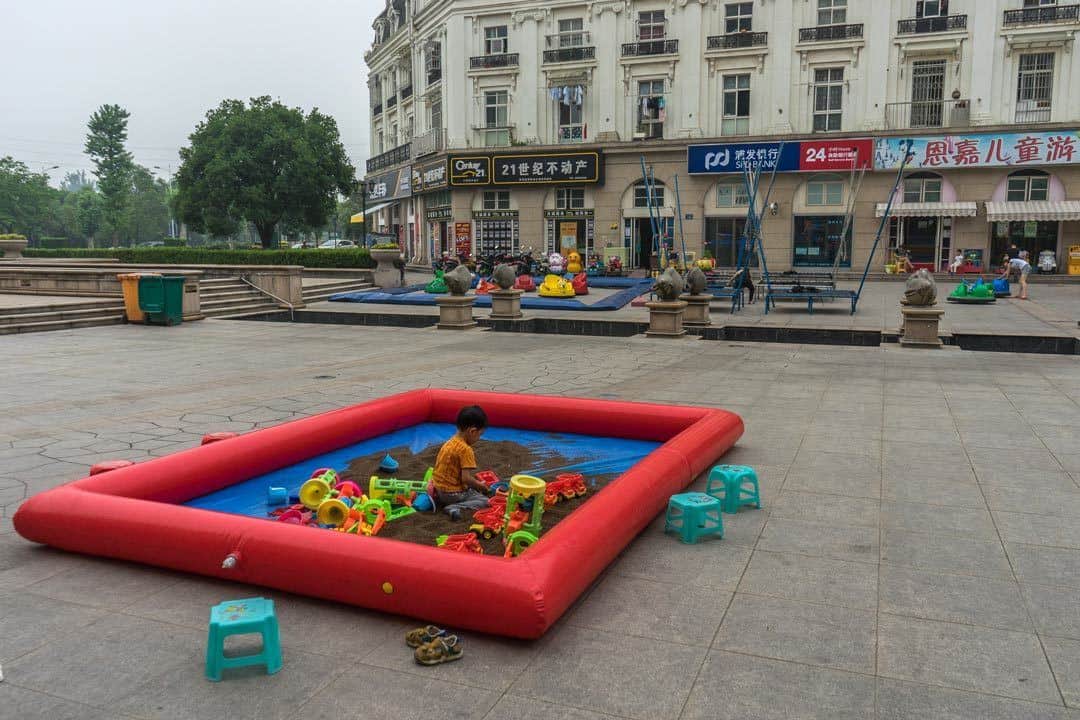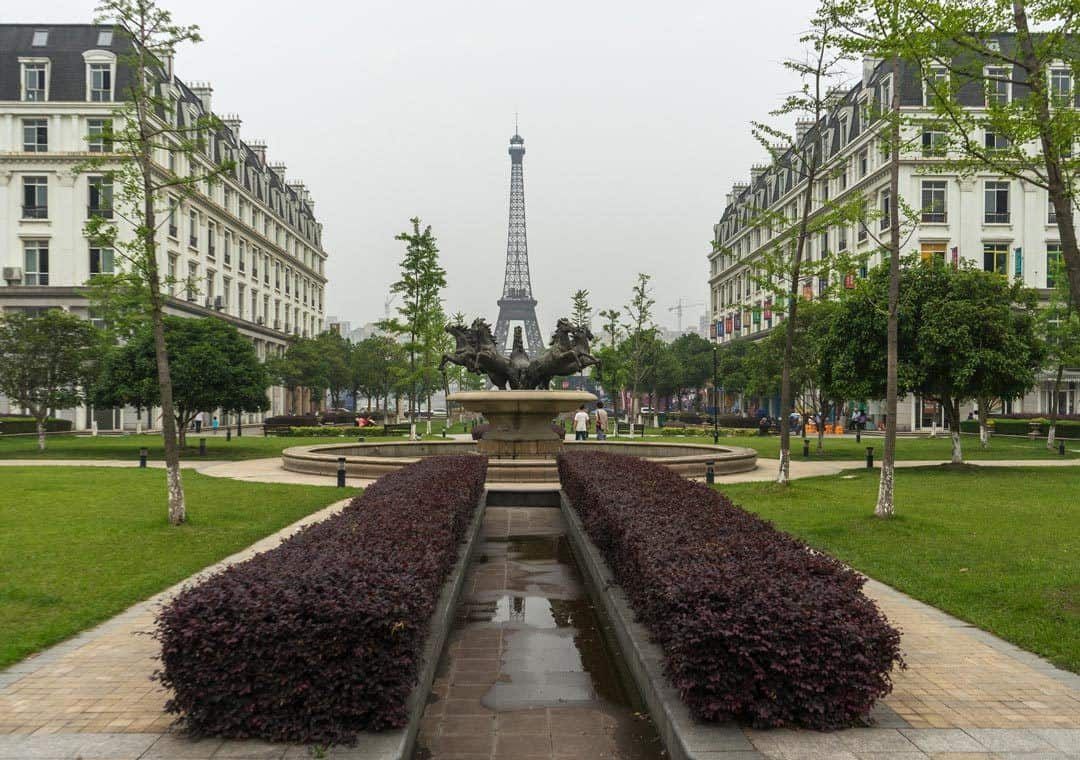
Scattered along a barren landscape, towering skyscrapers collect cobwebs and apartment buildings are left abandoned.
The empty streets of new age ghost cities in China have been attracting international curiosity for years. The rapid construction of new towns is being completed at a phenomenal rate, in the hope that the future will see a sudden influx of locals filling their vacant rooms.
The Chinese government is preparing for the expected shortage of housing that will soon impact the overpopulated communist nation. Any train ride along the eastern side of the country will expose hundreds of these unfilled settlements.
A few hours from the modern metropolis of Shanghai, one such city is raising eyebrows. Not just for its empty towers but also for its ironically familiar style.
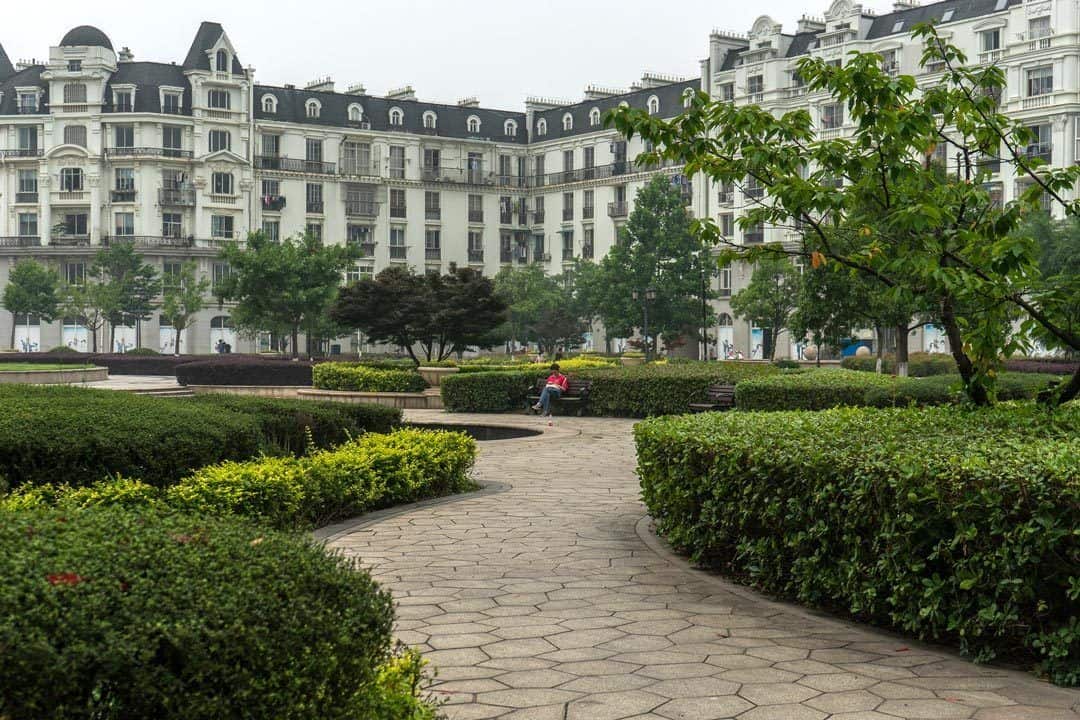
Mid-afternoon rambles by as I stroll down the famed Champs Elysées. Weaving between manicured hedges and sprawling fountains, the iconic Eiffel Tower soars ahead in the distance.
Parisian facades rise high on both sides of the boulevard. But the street vendors are selling steamed dumplings, not baguettes. Locals sip green tea, not wine.
After our four days in the city, the atmosphere has become stranger and more complex. Despite the uncanny resemblance on the surface, this is not Paris, and we are a long way from France.
Tianducheng is an urban development that has failed spectacularly. On the outskirts of Hangzhou, a large city only an hour by bullet train from Shanghai, rural farmland has been rezoned to make way for a grandiose plan that is quickly becoming the stuff of fabled legend.
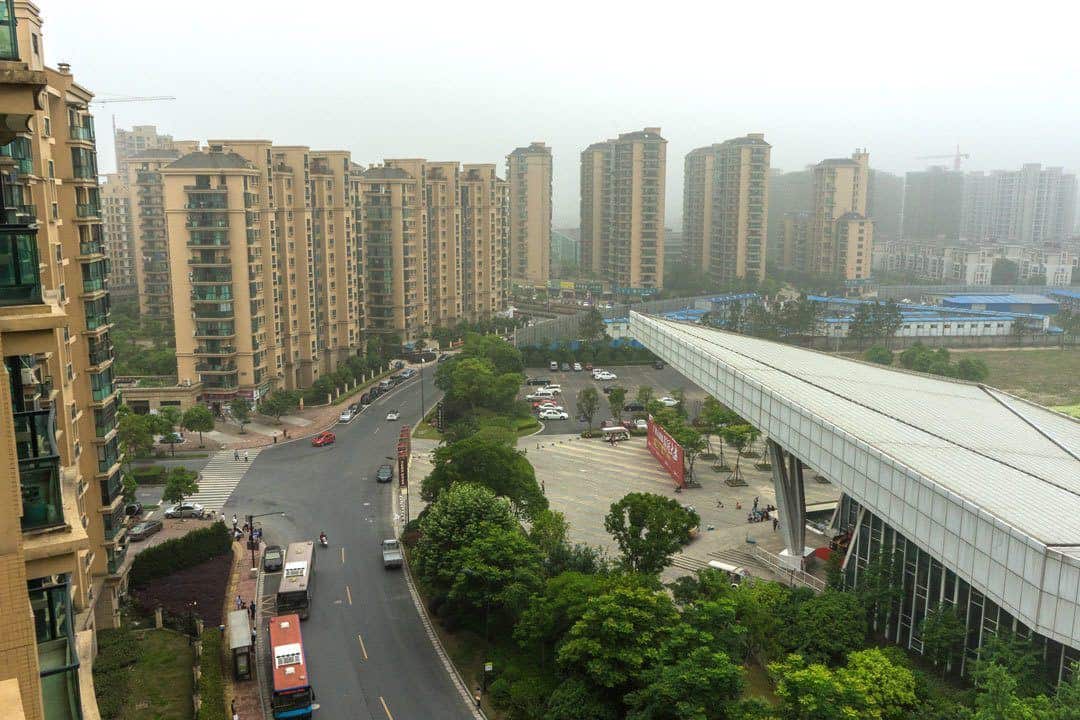
China has been building sensational replicas of internationally famous monuments for years. In Shenzhen, one can walk between both the Sphinx and the former World Trade Centre buildings at the ‘Window Of The World’ amusement park.
The largest man made building on the planet is in Chengdu, complete with a sprawling artificial beach and a fake sun. In Tianducheng, investors had Paris in their sights.
Developers started construction on Tianducheng in 2007, complete with a 1:3 scale replica of the Eiffel Tower and a recreation of the fountain from the Luxemburg Gardens.
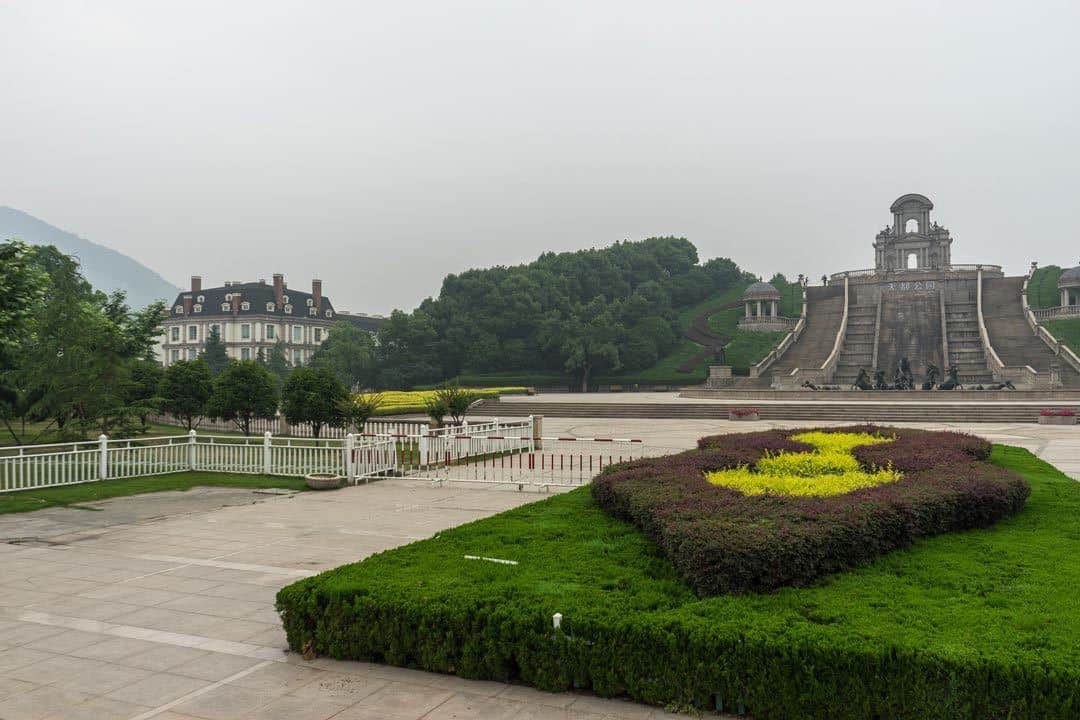
Original plans had an expected capacity of 10’000 residents. Today the town’s population is around 10% of that. The streets are unoccupied, shop fronts have been boarded up, iron railings are rusted over and that famous fountain is bone dry.
A portion of Hangzhou’s affluent middle class flocked to Tianducheng, wide eyed and with the hopes that its popularity would take off. A Parisian replica in the Zhejiang province would perhaps convince domestic tourists that there is no need to travel abroad when France’s best attraction is in their own country.
Unfortunately high real estate prices and a change in economic growth have resulted in few visitors. Those that do arrive are usually inquisitive travellers or wedding parties and photographers on a day trip from nearby cities.
Young couples love the idea of having their wedding snaps taken in front of the Eiffel Tower, but they have little other reason to stick around.
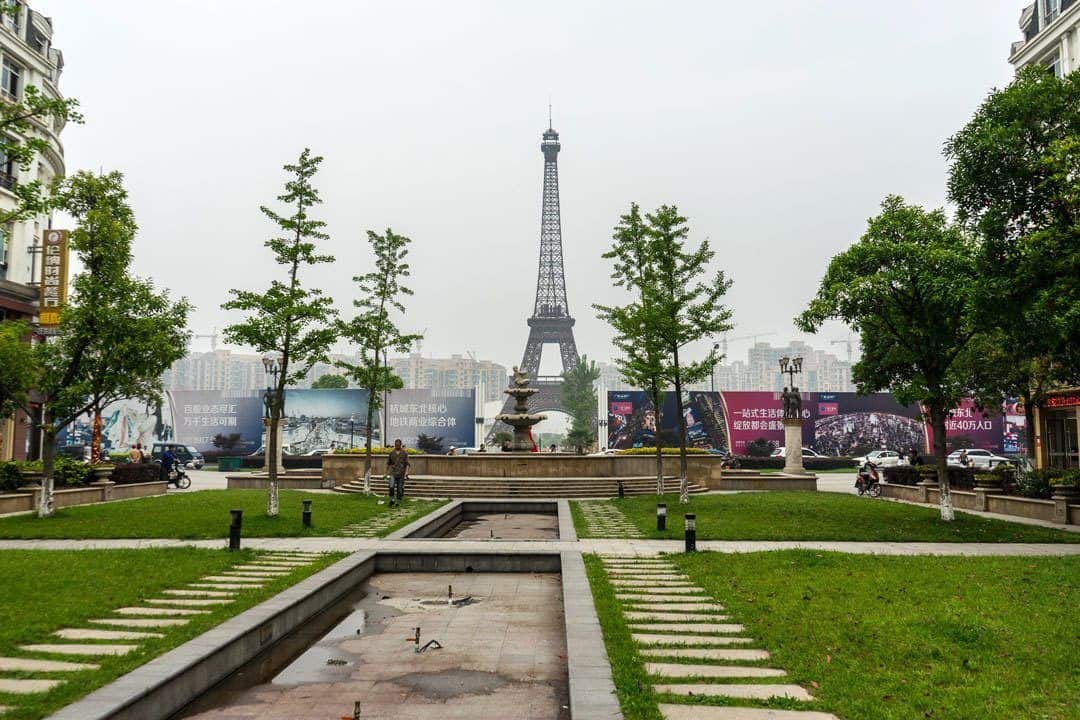
A lot of the city’s failings stem from its odd location. Hectares of farmland surround Tianducheng, which in itself is almost an hour by public transport from Hangzhou’s central train station.
Only one hotel is open for foreign guests – the aptly named “Tianducheng International Resort” – and a handful of eateries serve up typical Chinese fare.
The skies remain grey most of the year from the heavy pollution drifting in from factories in the surrounding area. The only time you will see a hive of activity is at the end of the day, when construction workers finish their shifts.
The park that surrounds the Eiffel Tower is littered with trash and overgrown with weeds. The odd cow wanders across the fields while security guards sleep in the shadow of the tower. Basketball courts are covered in dirt, with no one around to use them.
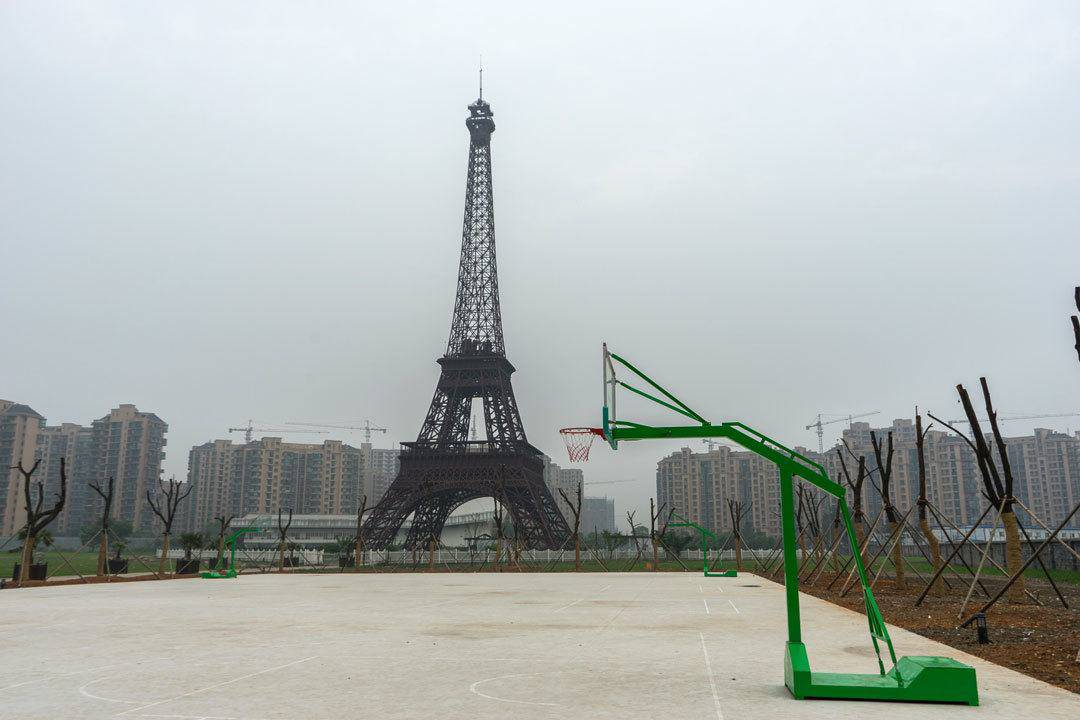
One corner of the park holds the worker’s quarters. The sanitary and living standards are appalling, but no one complains for fear of losing their employment opportunities on the adjacent building sites.
On the Champs Elysées, the situation is only marginally better. No water flows through the canals and business doors are bolted shut.
The only real estate agent in town does not have enough window space to advertise all of the units for sale. Even if you were interested in purchasing the surprisingly luxurious estates, the office is dark and empty.
Only two places seem to be thriving in the ghost city: The construction sites building more and more apartment buildings, and the investor’s information centre. This immense hall holds a 3D model of how Tianducheng will eventually look, if construction is ever completed.
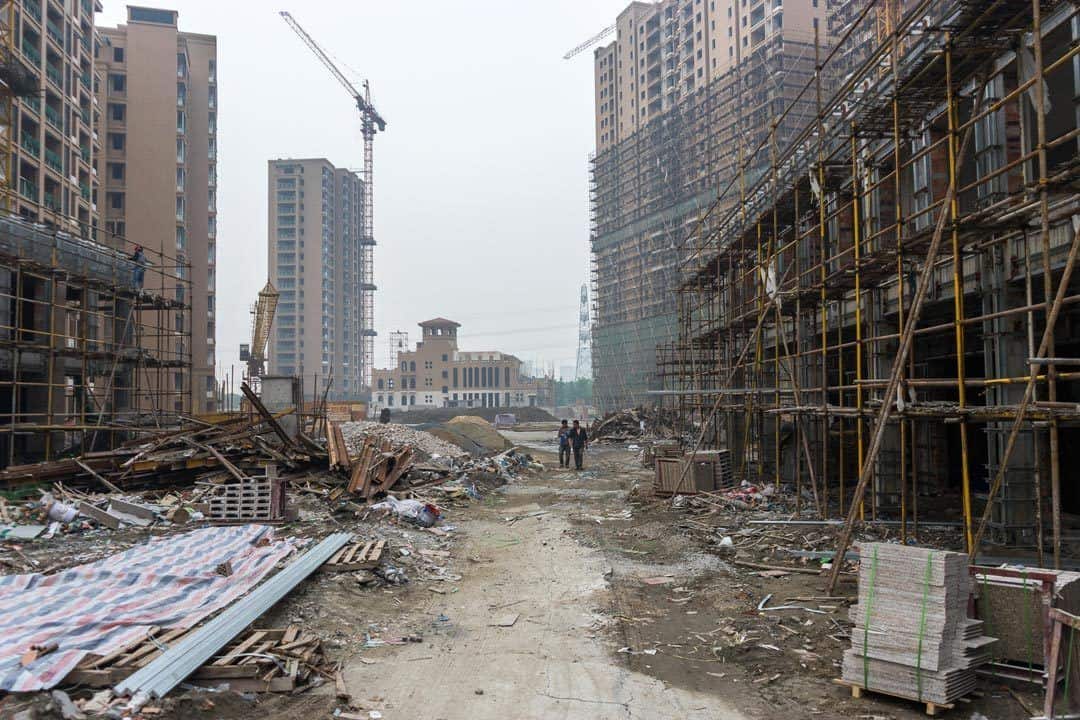
The hopeful look on the salesperson’s face when we walked through the door was heartbreaking, as she quickly realised we were just curious investigators, not people brandishing chequebooks.
At night, the few Chinese locals who live in the town gather outside the information centre to dance and practice Tai Chi. They try to maintain a life of normality, even though the true realities are dim.
There is no money to be made from this fake Parisian city, and no incoming wealth. No flocks of tourists and no romantic movies being filmed beneath the Eiffel Tower. Just more money being spent on new residences that no one can afford or would even want.
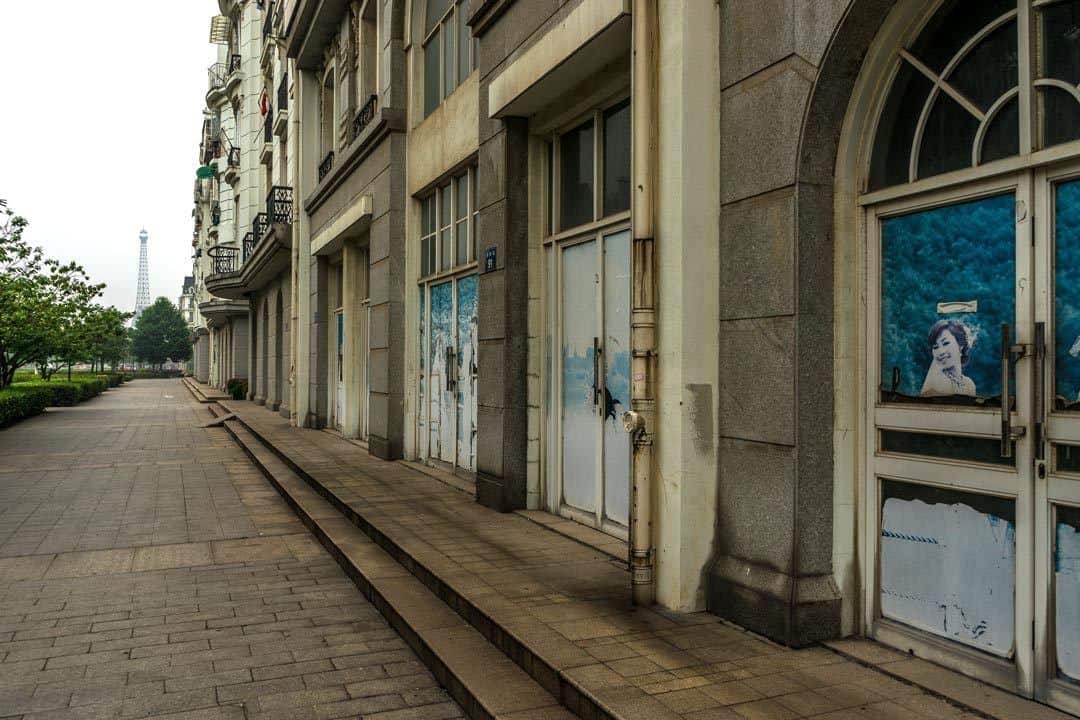
The sounds of our footsteps echo down the empty Champs Elysées as we finally leave the estranged Paris of the East.
A lonely child plays in a makeshift sandbox while his parents try desperately to make a sale from their streetside market stall. Cranes slew above us, shifting building supplies to create another addition in the ghost city.
The Eiffel Tower looms behind us, slowly disappearing into the smog. How long will it take before the last of the residents have no choice but to also disappear into the next failed development?
This story was written by Jarryd Salem and originally appeared on News.com.au.
